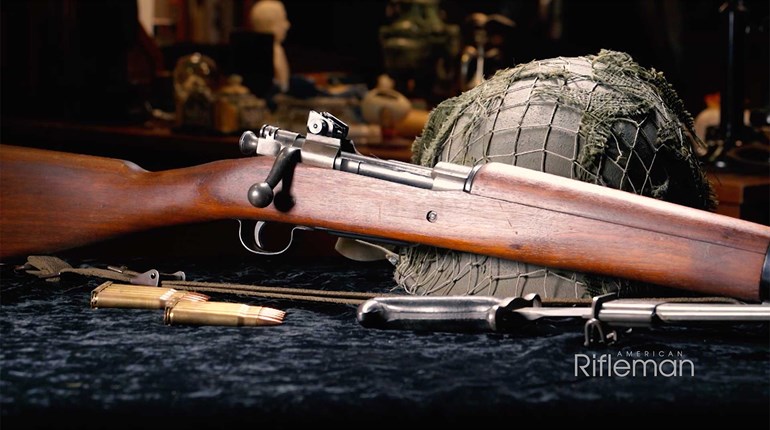
Editor’s Note: For today’s #ThrowbackThursday, we’re examining the lessons the Allied powers learned in World War II from one of America’s most formidable enemies at the time.
Arguably the greatest general that Germany produced during WWII was Field Marshal Erwin Rommel (1891-1944), The Desert Fox. A career soldier, he fought during both World Wars, and became so revered for his tactical leadership skills and aggressive battlefield style that some Allied forces began to believe he was superhuman. To that point, the British Army Commander-in-Chief C.J. Auchinleck, issued the following order to his officers:
There exists a real danger that our friend Rommel is becoming a kind of magician or bogey-man to our troops, who are talking far too much about him. He is by no means a superman, although he is undoubtedly very energetic and able. Even if he were a superman, it would still be highly undesirable that our men should credit him with supernatural powers. I wish you to dispel by all possible means the idea that Rommel represents something more than an ordinary German general. The important thing now is to see that we do not always talk of Rommel when we mean the enemy in Libya. We must refer to “the Germans” or “the Axis powers” or “the enemy” and not always keep harping on Rommel. Please ensure that this order is put into immediate effect, and impress up all commanders that, from a psychological point of view, it is a matter of highest importance.
No, Rommel was not superhuman, but he did have what the Germans called (big-word warning) Fingerspitzengefuhl, an innate sixth sense of what the enemy was about to do. For instance, a German general, Fritz Bayerlein, Rommel’s Chief-of-Staff at the time, relates the following two anecdotes.
“We were at the headquarters of the Afrika Korps…when suddenly Rommel turned to me and said, ‘Bayerlein, I would advise you to get out of this [location]: I don’t like it.’ An hour later the headquarters were unexpectedly attacked and overrun.”
Bayerlein continues, “That same afternoon, we were standing together when he [Rommel] said, ‘Let’s move a couple of hundred yards to a flank, I think we are going to get shelled here.’ One bit of desert was just the same as another, but five minutes after we had moved, the shells were falling exactly where we had been standing. Everyone…who fought with Rommel in either war will tell you similar stories.”
Rommel also had the ability to quickly size up a battle in progress, and the decision-making skills to then seize the opportunity to attack when one presented itself. Consequently, he earned a reputation for, at times, making rash decisions, but those decisions seemed to pay off for him and his armies more times than not.
A trait that endeared Rommel to his vanguard troops was that he “led from the front,” spending nearly as much time with the frontline, everyday soldier as he did with his officers back at headquarters. As a result, his soldiers were willing to follow him anywhere.
Another characteristic that helped make Rommel the military legend he became was that he was constantly learning, not only from his victories, but also his defeats—especially his defeats, which seemed to haunt him. And he was open to new ideas, new equipment, new weapons, anything that would make his armies more efficient and in turn, more successful.
For example, Rommel did not invent blitzkrieg—a highly mobile style of warfare employing armored, motorized forces—but he and his 7th Panzer Division of tanks certainly perfected it in France during 1940. Later in the war, his Afrika Korps then continued using the technique in the deserts of North Africa to win battle after battle.
Rommel had always been a prolific writer, and following his time in Africa he authored a paper titled The Rules of Desert Warfare, the small portions below being just a few of the more interesting excerpts from the six-page document.
- The tank force is the backbone of the motorized army. Everything turns on the tanks, the other formations are mere ancillaries. War of attrition against the enemy tank units must, therefore, be carried on as far as possible by one’s own tank destruction units…[they] must deal the last blow.
- Results of reconnaissance must reach the commander in the shortest possible time, and he must then make immediate decisions and put them into effect as quickly as possible. Speed of reaction in Command decisions decides the battle. It is, therefore, essential that commanders of motorized forces should be as near as possible to their troops and in the closest signal communication with them.
- It is my experience that bold decisions give the best promise of success. One must differentiate between operational and tactical boldness and a military gamble. A bold operation is one which has no more than a chance of success but which, in case of failure, leaves one with sufficient forces in hand to be able to cope with any situation. A gamble, on the other hand, is an operation which can lead either to victory or to the destruction of one’s own forces. Any compromise is bad.
- One of the first lessons which I drew from my experiences of motorized warfare was that speed of operation and quick reaction of the Command were the decisive factors. The troops must be able to operate at the highest speed and in complete coordination. One must not be satisfied here with any normal average but must always endeavor to obtain the maximum performance, for the side which makes the greater effort is the faster, and the faster wins the battle. Officers and NCOs must, therefore, constantly train their troops with this in view.
- In my opinion, the duties of the Commander-in-Chief are not limited to his staff work. He must also take an interest in the details of Command and frequently busy himself in the front line.
- The Commander-in-Chief must have contact with his troops. He must be able to feel and think with them. The soldier must have confidence in him. In this connection there is one cardinal principle to remember: one must never simulate a feeling for the troops which in fact one does not have. The ordinary soldier has a surprisingly good nose for what is genuine and what is fake.
In the WWII movie Patton, released in 1970, actor George C. Scott portrays the brash and flamboyant American General George S. Patton. Near the end of the movie, after Patton and his army have defeated Rommel and his troops, Patton shouts loudly across the battlefield in victory, “Rommel, you magnificent b______, I read your book!”
The book he was referring to was Rommel’s Infanterie Greift An (Infantry Attacks). Published in 1937, it chronicles his experiences during World War I. If you’d care to read it, the treatise will give you a look into the mind of one of the greatest tactical military geniuses of the 20th Century. The Rommel Papers, edited by B. H. Liddell Hart and published in 1953, is also highly recommended, relating Rommel’s WWII experiences in his own words.






































